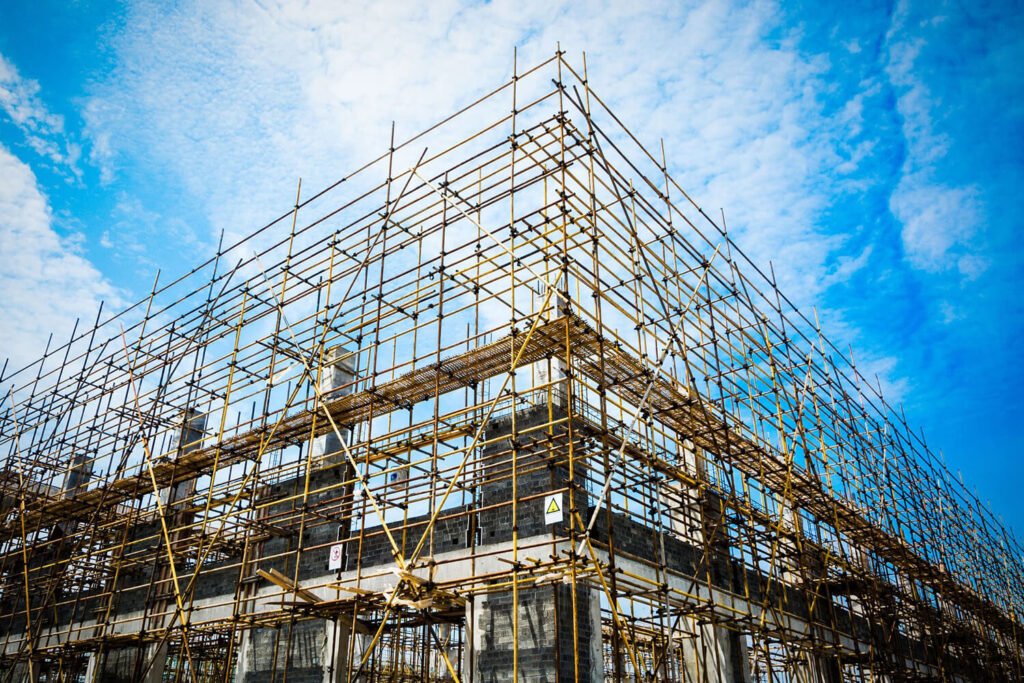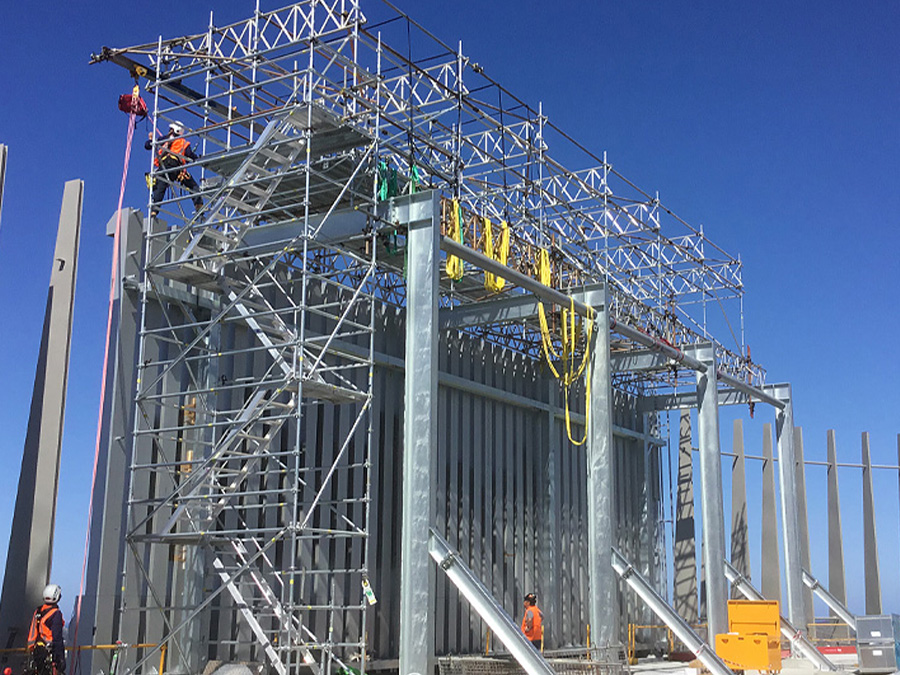Top-Notch Scaffolding Near Me: Expert Solutions for Every Job
Top-Notch Scaffolding Near Me: Expert Solutions for Every Job
Blog Article
Discovering the Different Kinds of Scaffolding Used in Construction Jobs
The building and construction sector counts greatly on different sorts of scaffolding to meet details job needs, each offering unique advantages and applications. Standard framework scaffolding supplies a durable structure for basic jobs, while put on hold scaffolding is essential for service skyscraper structures. Various other choices, such as system and rolling scaffolding, provide to efficiency and flexibility, respectively. The cantilever variant verifies indispensable in metropolitan environments where area is constricted. Recognizing the nuances of these scaffolding kinds is vital for enhancing safety and performance on building and construction sites, prompting a more detailed examination of their special characteristics and applications.

Typical Structure Scaffolding
Conventional frame scaffolding is one of the most extensively used methods in the construction sector because of its robustness and convenience. This system contains upright and horizontal frames that are constructed to produce a secure platform for employees and materials. The main components include upright posts, straight ledgers, and angled braces, which together supply a solid framework that can sustain considerable loads.
Among the vital advantages of typical frame scaffolding is its adaptability to various building and construction projects, varying from domestic structures to huge business frameworks. The modular layout permits simple setting up and disassembly, making it reliable for both short-term and long-term tasks. Furthermore, the system can be tailored in elevation and size, accommodating different building styles and site conditions.
Safety is vital in scaffolding applications, and typical structure systems are outfitted with guardrails and toe boards to prevent falls and guarantee employee protection. In addition, normal evaluations and adherence to security guidelines are critical in keeping the stability of the scaffold. Generally, typical structure scaffolding remains a basic option in the construction industry, giving a trustworthy platform for labor and improving general job efficiency

Suspended Scaffolding
Put on hold scaffolding supplies a special solution for building and construction projects that call for accessibility to elevated surface areas, especially in scenarios where standard frame scaffolding may be not practical. This type of scaffolding is commonly suspended from the roofing or top degrees of a framework, using a system of wheels, ropes, and platforms to create a working space that can be adapted to numerous heights.
One of the primary benefits of put on hold scaffolding is its flexibility. It can be quickly repositioned or decreased to accommodate modifications in building and construction demands, making it excellent for tasks such as window setup, frontage work, and maintenance on skyscrapers. In addition, the very little footprint of put on hold scaffolding enables better use ground space in city atmospheres, where room is typically limited.
Safety is a vital consideration in the usage of put on hold scaffolding. On the whole, suspended scaffolding provides a reliable and reliable service for accessing hard-to-reach areas in numerous construction circumstances, improving both productivity and safety on site.
System Scaffolding
System scaffolding, typically concerned as a modern remedy in the scaffolding industry, is composed of pre-engineered parts that can be promptly set up and adapted for numerous building tasks. Scaffolding. This type of scaffolding is identified by its modular design, which allows for flexibility and efficiency on work sites, fitting structural requirements and various heights
Typically made from high-strength steel or light weight aluminum, system scaffolding uses improved durability and security. The components consist of vertical articles, straight ledgers, and diagonal braces, which adjoin firmly, making sure a robust structure. The layout typically integrates standardized installations, streamlining setting up and disassembly processes, thus minimizing labor time and expenses.

Rolling Scaffolding
Moving scaffolding is a versatile alternative to traditional set scaffolding, created for wheelchair and ease of use on building and construction sites. This kind of scaffolding contains a platform sustained by frameworks with wheels, allowing workers to easily move it as needed. The wheelchair attribute significantly boosts efficiency, as it minimizes downtime connected with disassembling and constructing fixed scaffolding.
Commonly built from light-weight materials such as aluminum or steel, rolling scaffolding uses a tough yet scaffolder fifo portable option for jobs requiring constant repositioning - Scaffolding. It is particularly advantageous in jobs such as paint, drywall setup, and electric work, where access to numerous heights and places is essential
Safety is extremely important in rolling scaffolding style, with attributes such as locking wheels to stop unintentional activity when in use, and guardrails to safeguard employees from drops. Furthermore, several models are adjustable in elevation, fitting numerous task needs.
Cantilever Scaffolding

The style of cantilever scaffolding generally entails utilizing brackets or arms anchored to a structure or framework, enabling the system to expand outward you could try this out safely. Safety and security is extremely important; therefore, these scaffolds must be crafted to endure numerous loads and environmental conditions. Regular evaluation and maintenance are necessary to make certain architectural integrity and employee safety.
Cantilever scaffolding is favored for its flexibility and reliable use area, making it a preferred option in urban atmospheres where room constraints are usual. Moreover, it promotes easier access to high altitudes, eventually adding to the general performance of construction projects. As with all scaffolding kinds, correct training and adherence to safety and security standards are vital for workers utilizing cantilever scaffolding.
Conclusion
To conclude, the varied kinds of scaffolding used in building tasks each offer distinctive objectives tailored to details site needs. Conventional frame scaffolding provides stability, while suspended scaffolding offers adaptability for raised tasks. System scaffolding assists in quick setting up, and rolling scaffolding improves wheelchair for differing work environments. Cantilever scaffolding successfully attends to challenges Get the facts in metropolitan settings. Understanding these scaffolding types is vital for enhancing security and productivity in building and construction, inevitably adding to the effective conclusion of projects.
Standard frame scaffolding gives a strong foundation for basic jobs, while suspended scaffolding is necessary for job on skyscraper frameworks.Moving scaffolding is a flexible alternative to typical fixed scaffolding, designed for movement and ease of usage on construction websites. As with all scaffolding kinds, proper training and adherence to safety and security requirements are vital for workers using cantilever scaffolding.
Traditional structure scaffolding offers security, while suspended scaffolding uses versatility for raised tasks. System scaffolding assists in quick setting up, and rolling scaffolding improves mobility for varying job environments.
Report this page